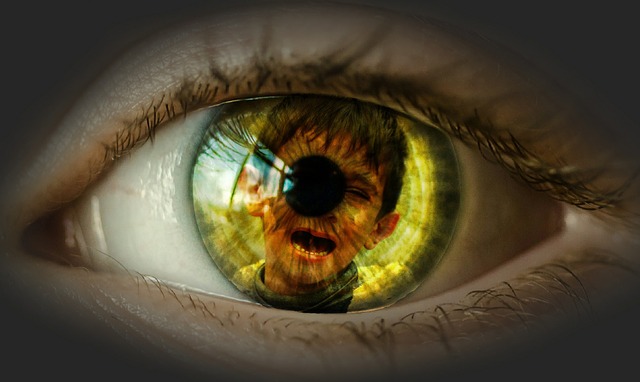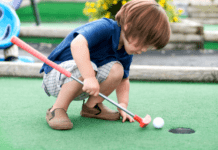
Moms continuously choose between a world of safety vs. risk. How do we keep our children safe while allowing them to fail, get hurt, and learn from experience? Because of our improved perspective on child safety after becoming a parent, we also find ourselves inspecting (even over-analyzing) other people’s children. Why are they dirty? Why are they aggressive? Why did they pull their pants down in front of my child? Questions such as these swarm in your mind and yet leave you feeling like you have a vague sense of what constitutes child maltreatment or what to do about it.
COVID19 has left children at home.
School is at home, and school will soon be out. The calls that typically flood the child welfare office during the nine months of school take a strong hiatus over the summer when there are not as many eyes on children who are at risk. Now, more than ever, those families are unwatched, unseen, and unnoticed.
The base of my career has been in child development with a heavy focus on child protection services. I have completed investigations, testified in a court of law, overseen ongoing child maltreatment cases, and supported and trained foster parents. What I say next might surprise you.
Child maltreatment is not all about the kids. (But the parents are adults, they should know better.) Two valid points, if those adults were raised in a way that fostered everything we attempt to promote in our children. We want children to be well-cared for and safe. Opinions on what qualifies as safe vary greatly from perspective to perspective. I’m writing in hopes of many things in this upcoming blog series but let’s start with these:
•Arm moms with the knowledge to confidently report or not report child maltreatment.
•Foster a sense of empathy for the family unit who suffers from the impact of child maltreatment.
So how do you identify child maltreatment in a way that allows you to confidently make a report? Let’s take a look at the State of Nebraska’s definition of three forms of child maltreatment.
Physical Abuse:
“is non-accidental physical injury…as a result of punching, beating, kicking, biting, shaking, throwing, stabbing, choking, hitting…, burning, or otherwise harming a child, that is inflicted by a parent, caregiver or other person who has responsibility for the child. Such injury is considered abuse regardless of whether the caregiver intended to hurt the child.”
Neglect:
“is the failure of a parent, guardian, or other caregiver to provide for a child’s basic needs. Neglect may be:
•Physical (failure to provide necessary food or shelter or lack of appropriate supervision)
•Medical (failure to provide necessary medical or mental health treatment)
•Educational (failure to educate a child or meet special education needs)
•Emotional (failure to meet a child’s emotional needs, to provide psychological care or allowing the child to use alcohol or other drugs)”
Sexual Abuse:
“is “the employment, use, persuasion, inducement, enticement, or coercion of any child to engage in, or assist any other person to engage in, any sexually explicit conduct or simulation of such conduct for the purpose of producing a visual depiction of such conduct; or the rape, and in cases of caretaker or inter-familial relationships, statutory rape, molestation, prostitution, or other form of sexual exploitation of children, or incest with children.”
Clear as mud, right?
Let’s break these down.
A three-year-old has a bruise on his upper arm. When you asked him how he got it, he says his mommy hurt him. Immediately you think, she grabbed him in anger.
What if this boy was sitting on a countertop under direct supervision. Mom turned her head to grab an egg for the recipe they were making. In that instant, the boy slid off the counter just as she turned her back to him. On instinct, she grabbed him to try and avoid a worse injury from the fall, leaving a bruise on his arm. Does that sound like maltreatment? Keep in mind that bruising around the upper arm is a common bruise to acquire during maltreatment.
So how do we confidently determine child maltreatment? I’ll leave you with this. Ask yourself three things:
•How well do I know this kid?
•Is there a history of marks/behavior?
•Do I believe this child will be harmed if he/she returns home?
The Context for Child Maltreatment
One bruise doth not a child maltreatment case make. While child maltreatment is a serious issue, reporting child maltreatment is traumatizing for a family. Don’t be afraid to spend time gathering information if you do not feel the child is in immediate risk of danger. If you think the child is in immediate jeopardy, they should not be sent home without intervention by the authorities.
I hope this helps during the global pandemic as we, parents, may see more of children and their friends than teachers do.
In the future, I would love to discuss with you why child maltreatment is not all about the kids and why fostering a sense of empathy for the family is of utmost importance in breaking the child maltreatment cycle.
If you suspect child abuse, please utilize the State of NE’s website to prepare yourself to report. Nebraska is a mandatory reporting state. As stated on the website, “Everyone has a responsibility to report suspected abuse or neglect. State law requires any person who suspects that a child has been abused or neglected to report their concerns to the Child Abuse and Neglect Hotline.”

















